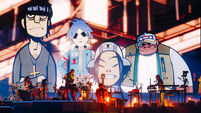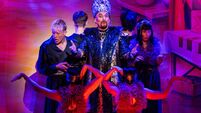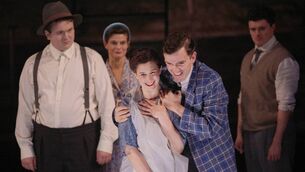All in the gutter: 10 graphic novels with star quality
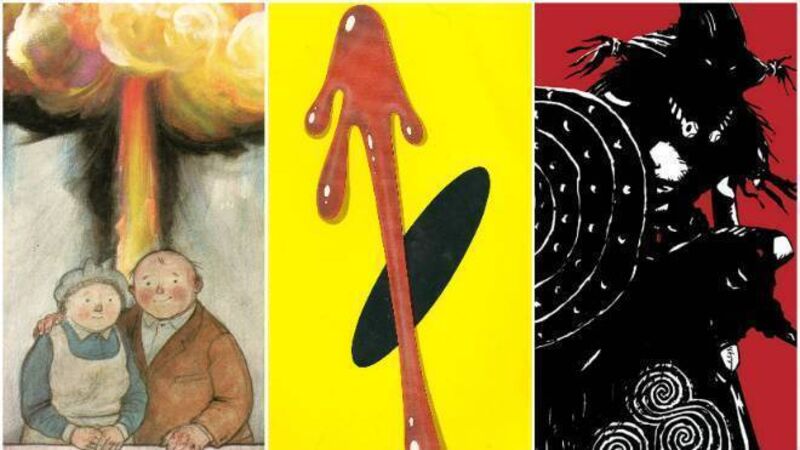
Some of Don O'Mahony's graphic-novel classics
The notion that comics are 'just for kids' has become increasingly old-fashioned and when news emerged earlier this year that the board of trustees for McMinn County Schools in east Tennessee voted unanimously to remove the Pulitzer Prize-winning from the curriculum it suggested that this illustrated story was too dangerous for younger readers.
Comics clearly deal with a range of complex subjects, so here is not necessarily a 'best of' list, but 10 worth considering for the times we live in.
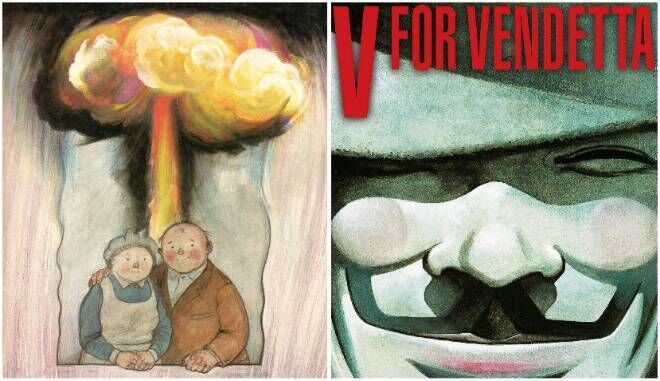
These times of East-West tensions have prompted recollections of the Cold War-era nuclear anxiety that was abroad in the 1980s and birthed films such as , , , and Frankie Goes To Hollywood’s 1984 single 'Two Tribes'.
Following on from his much-loved The Snowman, Briggs uses every trick in his arsenal to portray a doting, middle-aged English couple’s response to a nuclear strike on Britain. As graphic novels go it appears slight, but in less than 40 pages Briggs captures the bumbling complacency of the 'keep calm and carry on' attitude in heart-wrenching detail.
There’s nothing quite like an idea whose time has finally come, and that much was evident during 2011’s Occupy movement in the United States where the eerie presence of Guy Fawkes masks was prevalent. This originates from Moore and Lloyd’s 1980’s comic . With its distinctive cinematic chiaroscuro art and dense plot, the book is set in a dystopian England controlled by fascists and deals with the permanently masked and morally ambiguous V’s quest for vengeance and his espousal of anarchist ideology. Little wonder it has become emblematic of protest and sedition. “Ideas are bullet-proof,” a triumphant V declares.

Having two Alan Moore-penned books on this list reflects Moore’s sizable contribution towards the expansion of comics as a medium. But also, in these times of heightened tensions between East and West, when the doomsday clock has never felt closer to midnight, this dense, multi-layered and visually sophisticated whodunit concerning a killer of costumed vigilantes, which was conceived in an era of heightened Cold War fears under the spectre of Mutually Assured Destruction, feels as contemporary and as mindblowing now as it did then. An eminently satisfying experience, regardless of whether you like superhero comics or not.
It’s interesting to note that outside of the enormous comics books market share occupied by superhero titles and manga a large proportion of graphic novels deal with non-fiction and memoir. I believe this is the Maus effect, and as valuable and worthwhile all those other books are they rarely, if ever, match the ambition of Spiegelman’s magnum opus.
Maus covers some big topics, thorny father-son relationships, family tragedy, intergenerational trauma and the Holocaust.
Maus’s scope is matched by an innovative post-modern storytelling approach that casts the Jews as mice and the Nazis as cats. An essential read.

You’d almost miss the subtitle: 'The Invisible Art', but over the course of nine chapters, McCloud lays bare the mechanics of comics, investigating line work, colour, speech bubbles and the gutter — that space between panels where magic happens.
McCloud is a consummate cartoonist, and he has also read widely and thought deeply about the medium, dispensing illuminating observations about iconography and representations of time and space in comics. Since its publication 30-years-ago an industry of academic work about comics has arisen, but this scholarly and entertaining comic about comics remains as accessible and as vital as ever.
Joe Sacco’s great achievement is in using cartooning as a vehicle for serious journalism, covering topics such as the migrant crisis, environmental concerns and the conflict in Palestine. But as war rages in Ukraine, it’s timely to recall his accounts of life in the besieged cities of Goražde and Sarajevo.
He doesn’t shirk from graphic portrayals of the depraved brutality visited upon Goražde’s Muslim population, but he also captures humour, hope and resilience. It is characters he encounters like the man besotted by the American rock songbook who thankfully linger longer in the memory than the visceral horrors.

The best of cartooning and the worst of humanity collide wonderfully in French illustrator Winshluss’s reimagining of the Carlo Collodi fairytale. Bearing little relation to the Walt Disney version, Geppetto is an inventor, and Pinocchio is a child-like robot created for military use. There is a sub-plot involving Jiminy, a dissolute cockroach who takes up residence in Pinocchio’s head.
The most grotesque impulses of mankind permeate this largely wordless, pitch black, macabre tale, but the dynamic art and colouring are exquisite. You could easily lose yourself in it were it not for the story’s furious momentum.
My Leaving Cert history book had two references to Rosa Luxemburg: her desire to impose a socialist state in Germany and her murder in 1919. History can appear so dry. Through her writing and contemporaneous views of her, Evans’ biography puts flesh and blood on this great social philosopher and revolutionary.
Bursting from the pages is a passionate, charismatic and fiercely intelligent character who overcame physical infirmity and societal prejudices to become the intellectual firebrand who practically blazes her way through this book. Her philosophy is made feel accessible, and while her demise feels crushing, the book offers hope.

Is a milestone in Irish comic book history? Up to this, and outside of the indie scene, the Irish graphic novel was the preserve of a single publisher, who entertained nothing outside of the historical and mythological canon. Published by an American company that supports creator-owned work, runs counter to the hegemony of nation-defining and mythologising tales by being set in Limerick and having a gangster as its hero. Pacey, gritty and written in the vernacular, it showed that there’s absolutely a market for contemporary Irish tales — not just here but abroad also.
Released initially between 2014 and 2018 as an independently published, limited-edition trilogy, Bolger’s epic treatment of Cú Chulainn saw respected American comics publisher Dark Horse release it this year as a weighty single volume.
One panel depicting Queen Maeve’s massed armies on the plain is like a wink to Louis le Brocquy’s illustrations for Thomas Kinsella’s The Táin. Otherwise, Bolger’s moody black and white artwork, complemented by the odd dramatic dash of red, recalls Frank Miller’s . Thankfully lacking his hypermasculinity, it manages to balance memorable design with rip-roaring storytelling that throws everything into the mix.





